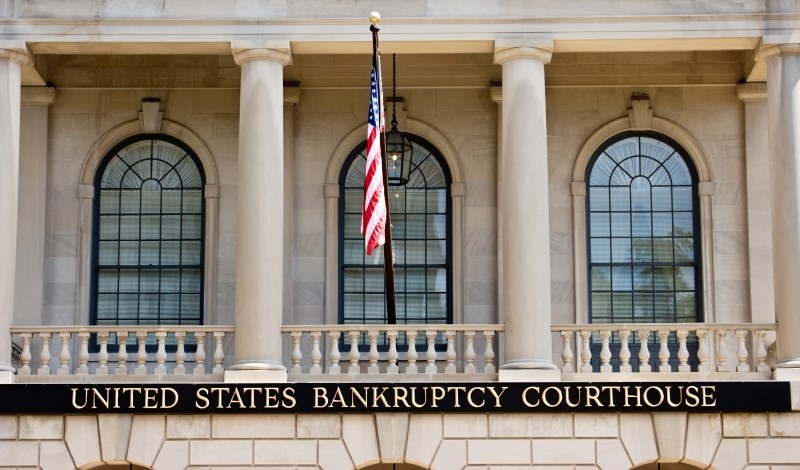
Scholars and commentators discuss whether mass torts belong in bankruptcy court.
The Boy Scouts of America faced tens of thousands of claims of child sexual abuse spanning multiple decades. Fearing the end of its operations, it filed for bankruptcy in 2020. Now, the organization’s proposed bankruptcy settlement terms would bar all survivors from seeking justice against their abusers in other courts—whether or not those survivors agreed to the deal. The U.S. Supreme Court is considering the permissibility of such terms.
Mass tort bankruptcies such as that of the Boy Scouts occur when an entity—often a large company—faces a wave of litigation from alleged victims. High-profile cases have concerned the opioid crisis, products liability, and sexual misconduct. To shield itself from claims, the defendant company files under Chapter 11 of the U.S. Bankruptcy Code, which halts all litigation. Victims become claimants who, if they hope to recover, must work with the company to reach a settlement.
But is bankruptcy court the right place to handle claims of widespread injury?
Some commentators say yes, arguing that bankruptcy benefits both debtors and victims. These proponents point out that the debtor enjoys the immediate respite from costly litigation that the Bankruptcy Code mandates. And because Chapter 11 does not require the debtor to shut down or liquidate its assets, business can continue.
Proponents of handling mass torts in bankruptcy also contend that the process benefits victims. They note that bankruptcy serves the key function of maximizing the value of the debtor’s estate, pooling all of the debtor’s resources and then equitably distributing them to claimants. Proponents suggest that, as a result, victims may walk away with more money than they would in the asset-draining civil litigation system, in which defendants must instead use those resources to fend off claims.
In addition, some commentators observe that civil litigation is slow. They caution that it may even subject victims to exploitation by attorneys. In bankruptcy, however, victims enjoy an organized system of collective settlement designed to treat claimants equally and with finality.
Some experts, however, object that the benefits are not as evenly distributed between debtor and victim as proponents claim.
These critics warn that when defendants migrate mass tort claims to bankruptcy, they may seek to deprive victims of their “day in court.” Some legal experts have objected, for example, to allowing non-debtor third-party releases in which debtors condition settlement on immunity from future lawsuits for interested third parties. Courts are divided on whether such releases are permissible without the consent of all victims.
Commentators also point out that debtors have more procedural control in bankruptcy than they would in civil litigation. Some opponents warn, for example, that entities may choose to file in districts with judges known to favor debtors. In addition, some experts caution that the trust fund compensation process common in settlements—through which victims must bring all claims against a central trust rather than against the debtor in court—can afford inadequate procedural protections for claimants, such as the right to appeal award determinations.
Finally, some commentators question whether certain mass tort debtors belong in bankruptcy at all. Scholars, politicians, and courts have taken aim at a legal maneuver known as the “Texas Two-Step,” through which solvent companies enter bankruptcy by splitting themselves in two—and avoiding liability as a result.
In this week’s Saturday Seminar, scholars and commentators discuss the future of mass torts in bankruptcy.
- In a recent article, Anthony J. Casey and Joshua C. Macey of the University of Chicago Law School argue that bankruptcy proceedings are well-suited to resolve mass tort claims. To protect against potential abuse, Casey and Macey propose reforms such as reducing the evidentiary burden for victims to prove fraudulent transfer claims against debtors. In addition, Casey and Macey contend that reforming non-bankruptcy law to facilitate findings of individual liability for corporate misconduct could increase tort claims recoveries. Despite bankruptcy’s misuse by corporations to resolve controversies, such as sexual assault allegations, opioid and product liability claims, and environmental cleanup obligations, Casey and Macey maintain that bankruptcy can still be a valuable tool for tort claimants.
- Bankruptcy should not be a tool for financially stable opportunists, Lindsey D. Simon of Emory University School of Law contends in an article in The Yale Law Journal. Simon objects to the proliferation of bankruptcy “grifters,” whom she describes as solvent, non-debtor third parties that benefit from a company’s Chapter 11 filing—such as the Sackler family in the Purdue Pharma bankruptcy. To deter what she characterizes as abuse by entities that commit torts, Simon suggests that lawmakers subject non-debtors to some of the same procedural requirements as debtors, including mandatory asset disclosure. Simon also argues that lawmakers should impose stringent requirements for approving third-party releases, such as requiring larger contributions to settlement trust funds.
- In a law review article, Brook E. Gotberg of Brigham Young University J. Reuben Law School criticizes efforts to limit debtors’ ability to file for bankruptcy in their preferred venue. Gotberg contends that settlement goals shared between debtors and creditors make forum shopping—the practice of filing claims in a court more likely to treat the filer favorably—is less of a concern in bankruptcy than it is in litigation. She asserts that both parties want to develop a plan that will repay creditors. To address concerns that debtors might have an unfair advantage, however, Gotberg suggests that lawmakers standardize filing rules across jurisdictions and provide creditors with the ability to immediately challenge the debtor’s venue choice in federal district court.
- Lawmakers should prevent corporations from exploiting bankruptcy law as a means to mitigate liabilities from sexual misconduct claims, Columbia Law School graduate student and Wharton Initiative on Financial Policy and Regulation Postdoctoral Fellow Adi Marcovich Gross suggests in an article in the American Bankruptcy Law Journal. Gross argues that although bankruptcy can offer a streamlined process for compensating victims, it also shields corporations and executives from full accountability. Gross recommends that lawmakers amend bankruptcy law to prioritize sexual misconduct claimants and curtail the use of third-party releases. Gross contends that these measures would redistribute the economic impact of sexual misconduct onto those best positioned to prevent it: managers, lenders, and insurers.
- In a note in the Connecticut Law Review, recent University of Connecticut School of Law graduate Sarah Melanson argues that Congress should expand Section 524(g) of the Bankruptcy Code to allow explicitly for non-debtor releases in the mass tort context. Section 524(g) currently authorizes bankruptcy courts to enjoin claims against non-debtors if certain requirements are met and only in claims relating to asbestos. Melanson suggests instead that Section 524(g)’s legislative history contemplated expansion beyond the asbestos context and that non-debtor releases would maximize claimants’ potential recovery.
- Lawmakers should expand Section 524(g) to counter the inequitable effects of the Texas Two-Step, argues Olivia Maier in a note in the Washington and Lee Journal of Civil Rights and Social Justice. Maier criticizes the controversial Texas Two-Step, through which companies facing tort litigation allocate their liability to a new company and then place that new company into bankruptcy, leaving tort victims unable to proceed with their claims in court. Maier argues that expanding Section 524(g) to apply outside the asbestos context would strike a balance for victims. She contends that an amended statute would grant victims access to a settlement trust, through which they would enjoy increased recovery, greater voting power in the settlement process, and protections for future claimants.
The Saturday Seminar is a weekly feature that aims to put into written form the kind of content that would be conveyed in a live seminar involving regulatory experts. Each week, The Regulatory Review publishes a brief overview of a selected regulatory topic and then distills recent research and scholarly writing on that topic.



